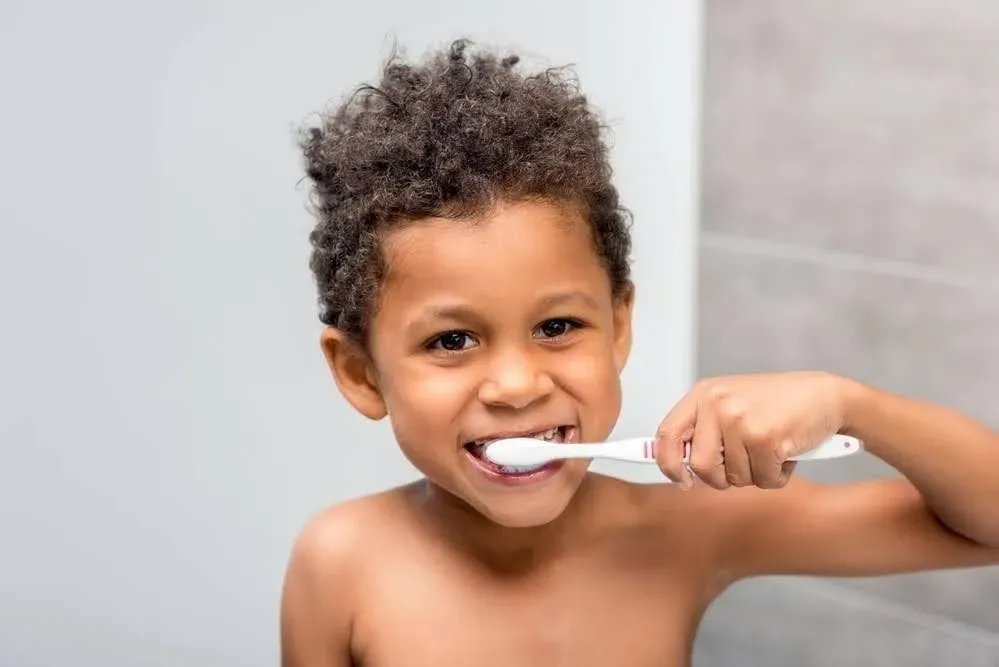4 WAYS TO PREVENT FLUOROSIS IN CHILDREN
It's an exciting time in your child's life when they lose their baby teeth and their adult teeth grow in. Sometimes, a child's permanent teeth may grow in with small white streaks or stains on the tooth. In most cases, the stains are caused by a condition known as fluorosis.
Fluorosis is almost exclusive to children without adult teeth and means they have been exposed to too much fluoride. While fluoride provides a natural way to protect teeth, too much can lead to cosmetic differences in teeth. Learn about four ways to prevent fluorosis so the permanent teeth can grow without any stains or streaks.
1. Proper Brushing Techniques
When a child starts to brush their teeth, establish habits to help prevent fluorosis. The first is to limit the amount of toothpaste a child uses. During their first couple of years, you should only use a small streak of toothpaste about the size of a grain of rice. Once a full mouth of baby teeth grows in, increase the toothpaste to the size of a pea.
If you use an excessive amount, a child may have too much fluoride exposure that builds up over time. You should also teach your child proper ways to spit after they brush. If a child swallows a lot of toothpaste, then the fluoride levels can dramatically increase. Consider having a child swish water around and spit out excess toothpaste after each brushing session.
2. Local Water Testing
The amount of fluoride found in your drinking water can make a big difference in the exposure your child has. If your home has public water, then you're supposed to receive notice when fluoride levels are higher than the recommended amount. If your home uses well water, then the only way to know is through testing.
Every couple of years, you should have your well water tested for fluoride levels. If the levels are too high, then consider alternate drinking water options. Bottled water or filtered water has better control of fluoride levels and will prevent over-exposure for your child.
3. Children's Drinks
Many healthy drinks catered to children come packed with nutrients and extras, but you should always read the labels for the drinks. Some juices or flavored waters may contain extra fluoride to help boost cavity protection in teeth, but too much consumption could lead to fluorosis.
Many natural juices contain increased levels of fluoride as well. For example, many forms of grape juices and pineapple juices contain high levels of fluoride. Prevent fluorosis by alternating drink options and limiting the amount of fruit juice in the home. Filtered water is typically the best option to prevent fluoride exposure.
4. Routine Dental Cleanings
For many, the presence of early-stage fluorosis is impossible to see. The best way to check a child's teeth is through routine dental cleaning. When your child loses their first tooth, you should schedule a cleaning. The cleaning includes a full oral exam and a dentist will take a close look at the incoming adult tooth.
If early signs of fluorosis are present, then a dentist can help you figure out ways to cut down on fluoride intake. If the fluorosis persists, then a dentist will help clean and whiten the teeth to eliminate the streaks and discoloration that may appear.
A dentist will teach a child proper ways to brush and tell them the importance of spitting after brushing. When heard from a professional, a child may be more prone to follow directions. A dentist will use visuals to showcase the proper amount of toothpaste and the best ways to rinse a mouth.
Schedule an appointment with our experienced dental team at Desert Dental. We will help treat your child for fluorosis or any other dental problems that occur.









